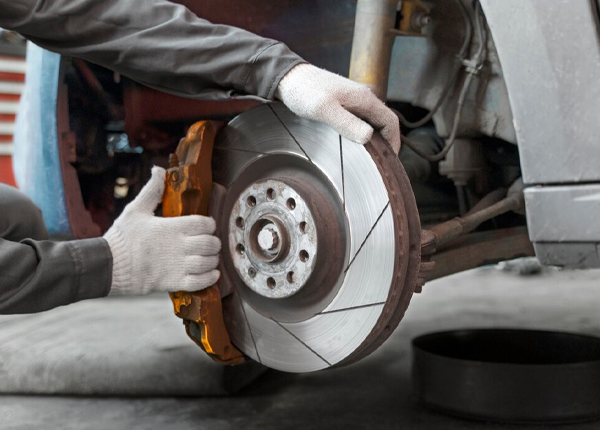How to remove catalytic converter without check engine light warning?
You are driving down the highway and all of a sudden your “check engine” light comes on. This implies that something is wrong with your car’s emission control system. But what if you don’t have a mechanic near you, and even if you do, you can’t afford one? Don’t worry, we have a solution for you.
You can simply bypass the catalytic converter with the help of a straight pipe. Without the catalytic converter, your car will run just fine without filtering your engine’s emissions. But you do have to be careful, as catalytic converter removal is highly restricted in the US and you get hefty fines.
This article will provide you with all the information you need to know on how to bypass the catalytic converter. It will also discuss the pros and cons of removing a catalytic converter. Then let’s get started!
Why is the catalytic converter important?
Catalytic Converters (Cat-Con) convert toxic exhaust gases from an engine into harmless compounds, helping reduce air pollution and keeping your car running safely.
The catalytic converter is a series of tubes that contain metals such as platinum, palladium, and rhodium. These metals act as catalysts, making the exhaust system’s chemical reaction more efficient.
The main function of a catalytic converter is to reduce harmful emissions from engines, such as hydrocarbons (HC), carbon monoxide (CO) and oxides of nitrogen (NOx). In addition, it also helps improve fuel efficiency by converting some of the energy contained in exhaust gases into heat energy. This thermal energy helps reduce engine temperature.
Types of catalytic converters
There are three main types of catalytic converters available on the market. They work to reduce emissions from cars before releasing the gases into the air. Let’s take a look at them:
oxidation catalyst
It is the first type of catalytic converter; The dangerous pollutants, HC (combustible hydrocarbons) and CO (carbon monoxide), within the exhaust, are reduced with this type of catalyst. Also, it normally uses lower air injection. However, this catalyst only reduces a small portion of the contaminants.
double bed catalyst
The second type of catalytic converter is the double bed catalyst. It works more precisely than compared to an oxidation catalyst. It uses a two-stage system to convert harmful pollutants into less dangerous substances.
In the first stage, it reduces the amount of NiO2 emissions. In the next phase it reacts producing hydrocarbons from the fuel and unburned carbon monoxide. This type of catalytic converter effectively reduces nitrogen oxide and hydrocarbon emissions, making it a popular choice for vehicles that must meet the most stringent emission standards.
three way catalytic converter
The three-way catalytic converter is the most advanced catalytic converter on the market today. It uses oxidation, reduction and storage technologies to reduce the three main pollutants (hydrocarbons, carbon monoxide and nitrogen oxides) from vehicle exhaust gases.
In addition to being extremely efficient, three-way catalytic converters are strong and durable, making them a popular choice for vehicles that must meet strict emissions standards.
Does removing the catalytic converter affect the engine?
Yes, removing a catalytic converter can significantly affect engine performance, since the device is primarily used to reduce emissions. The main impact of removing a catalytic converter is that exhaust gases will flow more freely out of the system, meaning the engine doesn’t need to work as hard and can develop more power.
Without the presence of the converter, it can cause the vehicle to emit more pollutants into the air, leading to environmental problems. Also, lack of conversion can result in more hydrocarbons and carbon monoxide being released into the atmosphere.
It can benefit those who want to upgrade their cars for racing, but it can also lead to higher fuel consumption and higher emissions of harmful pollutants. It can also create problems with an engine’s computerized control systems, resulting in poor overall performance. All possible factors should be evaluated before making changes to ensure the best result.
Can a catalytic converter be bypassed?
Bypassing a catalytic converter is possible, but should not be attempted carelessly. Bypassing a catalytic converter involves replacing or removing the device and creating an alternate exhaust system. If you bypass your car’s catalytic converter, you’re creating an alternate exhaust system.
It may involve modifications to the tailpipe, such as having straight pipes instead of mufflers. It may also require additional parts such as high flow manifolds, headers, and custom exhaust systems.
reasons
There are several reasons why someone might decide to bypass their catalytic converter:
Performance gains (as removal reduces back pressure)
Emissions tests (in case of failure)
Want a louder sound from your car engine
to increase power
However, while these gains can be temporarily seen in terms of performance, the bypass will lead to further engine deterioration over time as it does not filter out harmful contaminants. It’s also important to consider the long-term effects of bypassing your catalytic converter before taking such action.
Pros and cons of removing the catalytic converter
Skipping the catalytic converter has advantages and disadvantages. Let’s take a detailed look at both separately:
advantages
There are several benefits associated with removing a catalytic converter from your vehicle. Some of them include the following:
higher power
One of the biggest benefits of removing a catalytic converter is the increase in horsepower. By eliminating the catalytic converter, exhaust gases can flow more freely and reduce back pressure, significantly increasing engine power. This increased power can be useful for vehicles that require more power, such as SUVs or large engines.
Greater fuel efficiency
By removing the restriction caused by the converters, less fuel is consumed during acceleration, as there can be a higher efficiency in power production due to the increased airflow. This improved efficiency can lead to better fuel economy over time.
Engine lower operating temperature
Removing the catalytic converter can also reduce the engine’s operating temperature. It also reduces heat buildup and decreases engine friction. It can help your vehicle run cooler, which extends the life of your engine components.
better exhaust noise
With the removal of the catalytic converter, engine sound is dramatically increased as the device no longer causes a muffler effect. Also, this change in tone can make your vehicle sound more powerful than it is, which can make you feel proud of your ride. But it can be problematic for other drivers.
cons
Removing the catalytic converter can have several negative consequences affecting the environment and vehicle performance:
Atmospheric pollution
Catalytic converters are designed to reduce vehicle emissions by up to 90% by neutralizing harmful gases and converting them into less dangerous substances before they reach the atmosphere.
When these devices are removed, more raw pollutants can escape into the air, increasing levels of smog and other airborne pollutants. It affects local air quality and global climate change on a larger scale.
Louder noise is produced
Another consequence of removing the catalytic converter is increased noise levels due to exhaust gases escaping unrestricted through the tailpipe. When your car windows are closed, you may hear emission noise up to 110 decibels.
It damages your ears because it is louder than the safe listening threshold of 85 decibels. Even if the noise doesn’t bother you, it will still be loud enough to hear conversations. It can make driving unpleasant for those around you and can even draw the attention of law enforcement in some places.
See also: Types of noises and how to fix them
Banned in the US
Removing a catalytic converter is illegal in the United States due to its potentially harmful effects on air quality and public health. Depending on the region, violators can face fines or jail time for violating these laws. For example, there are no emissions tests in Florida and South Dakota. States with stricter regulations, like California, can penalize you up to $10,000 for driving without a cat.
A fault code is activated
Also, removing a catalytic converter from a car can trigger a trouble code in the vehicle’s on-board computer. It will cause a board error and may require expensive repairs.
sas or spare parts.
Increased fuel consumption for some cars
Some vehicles may also experience increased fuel consumption due to having the catalytic converter removed. The device helps control the amount of oxygen entering the engine’s combustion chamber, which affects how efficiently fuel burns.
Includes grease fittings with dust caps and an installation tool adapter.
Antitrust coating protects the casing.
Specifically designed to withstand heavy wear.
Ease of installation.
Much cheaper than the OEM equivalent.
Limited lifetime warranty.
Premium ball joints under $30.
How to bypass catalytic converter check engine light?
You can take out the catalytic converter and use a straight pipe to bypass it. The engine can run more smoothly without a converter, since it doesn’t have to work as hard to pump exhaust gases.
Required materials
To successfully remove the catalytic converter and check engine light, you need the following:
Hydraulic jack
Shunt tube or test tube
penetrating liquid
Adjustable wrench
four jack stands
step by step instructions
Park on a level surface and set the parking brakes.
With the help of a hydraulic jack, raise the car on the jack stands to allow the exhaust system to cool down.
Go under the car and spray penetrating fluid on the catalytic converter mounting bolts. Give the penetrating fluid about 15 minutes to work.
Disconnect the oxygen sensor harness from the catalytic converter using an adjustable wrench.
Use the adjustable wrench to remove the mounting nuts that hold the catalytic converter in place. You should lower the catalytic converter.
Connect the bypass pipe to the exhaust system near the catalytic converter. The pipe should be adjusted so that the bolt holes in the bypass pipe flanges align with those in the stock exhaust pipe.
Tighten the catalytic converter mounting bolts into the flange slots with the adjustable wrench.
Reattach the oxygen sensor to the bypass tube fitting and tighten it. To reconnect the sensor to the vehicle’s computer, plug the wiring harness into the sensor.
Use a hydraulic jack to raise the car, then remove the jack stands and put the car back on the ground.



